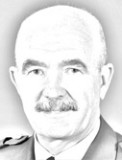ICU Management & Practice, Volume 16 - Issue 2, 2016
Crew Resource Management (CRM) human factors awareness
training is a useable tool in medicine and may fill a void in medical education
curricula. Factors impacting CRM implementation into the clinical environment
are identified.
Human factors (HF) account for the majority of adverse
events in highrisk environments, and human factors awareness is therefore
essential. Aviation-derived HF awareness training entitled Crew Resource Management
(CRM) focuses on teamwork, threat and error management, and blame-free discussion
of human mistakes.
In aviation, CRM is a multidisciplinary non-technical skills
standard for aircrew. Any CRM-training has to meet U.S. Federal Aviation Authority
(FAA) or European Aviation Safety Agency (EASA) regulations. Not only do these regulations
define the various subjects and the extent to which each subject should be discussed,
but they also set limits for refresher training and trainer requirements. This standardization
is a major contributing factor to the success of CRM. Crew Resource Management training
for aircrew consists of 2-day, full-time, interdisciplinary training. The
training syllabus consists of well-defined lectures in cognitive psychology and
multiple interactive sessions, including case discussions.
Evidence is increasing that CRM HF training is also a
promising format for safety climate change in the clinical environment, if well
standardized and supported by leadership and effective follow-up (Pratt et al.
2007; McCulloch et al. 2009; Haerkens et al. 2015).
Medical HF training has no international standard yet, and
training initiatives may vary in curriculum, duration, intensity, and follow-up
support. It is important to realise that it took the professional aviation
environment more than ten years to position CRM as an international aircrew
operational standard and fully integrate CRM into training curricula.
Our Approach
The aim of our organisation is to generate an evidence-based
standard for HF in medical training and operations in the Netherlands. To date
we have implemented HF “culture-interventions” in more than 26 high-risk
clinical departments in university and training hospitals.
Because the faculty of the clinical departments had no
previous formal training in HF prior to this CRM initiative, we introduced a
three–phase intervention approach, consisting of preparation, training and implementation.
1. Preparation Phase
During this phase the department’s safety climate is
assessed using the Safety Attitudes Questionnaire (med.uth.edu/chqs/surveys/safety-attitudes-and-safety-climate-questionnaire). All
healthcare providers are asked to fill out this questionnaire. Process
observations are conducted by CRM-trainers on site and video footage of
critical communication moments is gathered. During this phase all training
participants are informed of the upcoming CRM-training and implementation flow.
2. Training Phase
The basis of the training phase is 2 days classroom- based
CRM training using lectures, video feedback and interactive exercises.
All training sessions are conducted by two trainers, and allow for a maximum of 15 participants with a mixed background (physicians, nurses, secretaries, etc). All training is held at a training facility at some distance from the hospital to minimise interference, and is delivered within a three-month window to maximise impact.
The training comprises a well-developed standard course,
including lectures on HF and principles of CRM and multiple interactive sessions
using realistic data such as case studies and video footage from the trained
department.
The training emphasises nine key areas:
- Situational awareness and recognition of adverse situations;
- Human errors and non-punitive response;
- Communication and briefing and debriefing techniques;
- Providing and receiving performance feedback;
- Management of stress, workload and fatigue;
- Creating and maintaining team structure and climate;
- Leadership;
- Risk management;
- Decision-making (Haerkens et al. 2012).
Each training group is challenged to produce a shortlist of
practical action points to be used in the following implementation phase,
during which the CRM principles should be forged into custom-made and practical
clinical tools to be used in daily practice.
3. Implementation Phase
To be successful, the intended culture change should be
supported by additional implementation measures.
A core group of clinical professionals is formed, and receives additional coaching during the year following the training. This way they will be able to integrate and develop the new way of professional interaction within the department. This group consists of clinical professionals and the patient safety officer from the trained department. They coordinate the efforts to convert the CRM action points into clinical practice, thereby creating joint ownership. Initiatives include:
- Hosting a plenary kick-off meeting for all personnel;
- Development of checklists, multidisciplinary standard operating procedures and briefing guides;
- Regular information bulletins on the department’s intranet page;
- A yearly dedicated week of CRM during which extra attention is given to team performance by posters, lectures and internal coaching;
- Making CRM a standard agenda item in two-weekly staff meetings and in the yearly individual evaluations;
- Ensuring all new personnel receive the full CRM initial training.
Furthermore, even though CRM relies on intrinsic motivation
to be effective, the department leadership needs to clarify to all staff in advance
that CRM will become the professional standard, and that it is not optional but
will serve as a yardstick for professional evaluation. This requires leadership
by example.
Finally, simulation is encouraged as a followup measure. The
effect of CRM-based culture change can be reinforced by the use of scenario based
team training, again derived from aviation simulation expertise. Simulation
creates a zerorisk environment that allows medical teams to practise high-risk,
low-frequency events without endangering patients. This training can be done in
an artificial ‘laboratory’ environment or as in situ training, which is
conducted on actual patient care units involving actual healthcare team members
and actual organisation processes (Haerkens et al. 2012). Simulation— if well debriefed—has
many advantages, but if used as a stand-alone modus without the basis of
CRMtraining there is a risk of focusing too much on technical skills and
single-task performance. This could result in a limited impact on patient
safety.
The key to the success of scenario-based team training in healthcare is
the identification of the domain-specific team skills required to manage routine
and emergency scenarios. We suggest implementing two separate phases of
simulation training: the first level of training should mainly focus on
technical skills. After having followed classroom-based CRM-training
participants may join second level simulation sessions that focus on nontechnical
performance.
Our Experience
Our experience with CRM implementation in more than 26
high-risk clinical departments in Dutch hospitals is encouraging: the
aviationderived HF training concept was highly appreciated by medical
professionals and identified as an important part of professional
self-regulation. Overall, the healthcare providers’ perceived safety climate
usually improved (Haerkens et al. 2015).
Barriers
Important barriers to implementation still remain (Timmon et
al. 2015). First, organizational structures and existing department cultures
may induce a general reluctance to change ways of working, especially if they
are thought to involve additional effort. Second, ever increasing financial and
time constraints challenge the funding and time investment crucial for initial
and refresher training and implementation efforts. Although one of our projects
was awarded the Dutch Health Inspectorate’s Patient Safety Award in 2013, to
date Dutch national medical societies and health insurers have not yet agreed
on funding for a national Human Factors training curriculum for healthcare professionals.
Third, the managerial challenges of integrating CRM into a department’s cultural DNA should
not be underestimated. Our approach to introduce CRM as an initiative led by
clinicians requires a disengaged but supportive stance of the hospitals’
management. This probably improves the acceptance by the professionals.
Nonetheless, managerial issues remain at both clinician and
manager/administrator level. While clinicians are in general enthusiastic about
initiating and leading CRM activities, they often become more ambivalent if it
leads them into more formal ‘managerial’ activity. This deepseated concern
about managerial work may prove to be an obstacle to the development of HF in
healthcare. Integrating managers/administrators into the CRM implementation process
proved challenging, as expectations toward management’s role varied. CRM
trainees expected management to facilitate the development of an HF approach by
allowing sufficient time and adequate funding, but also realised that implementing
changes requires active support from and cooperation with managers, both local and
corporate.
The bottom-up nature of our CRM-approach may in some cases have caused (lower)
management to adopt a negative “not invented here” attitude and disengage from
the implementation process, thus weakening the initiative.
Experience from past CRM / HF integration projects has
helped us identify some key success factors as well as threats to success that
may be of use to future clinical Crew Resource Management initiatives:
Success Factors
- The initiative is clinically-led.
- CRM training is delivered largely by clinicians with credible HF expertise.
- Confidentiality is maintained throughout the intervention.
- Participation is non-facultative – all staff members including residents and fellows are included.
Threats to Success
- Poorly managed expectations of the project, resulting in the idea that implementation of CRM/HF training will yield an immediate culture change. Improvement is unlikely to be seen within one year and requires dedication and tenacity from everyone involved (Haerkens et al. 2005; Kemper et al. 2011).
- Lack of a solid implementation plan and unrealistic timelines.
- Delay in initiating timely and noticeable improvements in daily practice.
- Insufficient accountable operational management.
- Disengagement of hospital management.
- CRM training is used as ‘window-dressing’ without adequate follow-up.
Conclusions
Aviation-based CRM/Human Factors awareness training is a
useful tool in medicine. However, adapting the organisational context to fully
integrate the Human Factors principles into daily operations remains a
challenge. In the future an (inter)national standard for medical CRM training
and evaluation is essential, and human factors should become a component of
undergraduate curricula.
Conflict of Interest
MHTM Haerkens, a board-certified surgeon and retired Royal Netherlands Air Force pilot, founded the Dutch organisation “Wings of Care” with the goal to implement patient safety measures on a national level. All other authors have no competing interests to declare.
Abbreviations
CRM crew resource management
EASA European Aviation Safety Authority
FAA Federal Aviation Authority
HF human factors
References:
EASA publication AMC1.1 ORO.FC.115&215 Crew resource management (CRM) training. Available from easa.europa.eu/system/files/dfu/Consolidated%20unofficial%20AMC%26GM_Annex%20III%20Part-ORO.pdf Article ↗
Haerkens MH, Kox M, Lemson J et al. (2015) Crew Resource Management in the Intensive Care Unit: a prospective 3-year cohort study. Acta Anaesthesiol Scand, 59(10): 1319–29. PubMed ↗
Haerkens MH, Jenkins DH, van der Hoeven JG (2012) Crew resource management in the ICU: the need for culture change. Ann Intensive Care, 2(1): 39.PubMed ↗
Kemper PF, de Bruijne M, Van Dyck C et al. (2011) Effectiveness of classroom based crew resource management training in the intensive care unit: study design of a controlled trial. BMC Health Serv Res, 11: 304. PubMed ↗
McCulloch P, Mishra A, Handa A et al. (2009) The effects of aviation-style non-technical skills training on technical performance and outcome in the operating theatre. Qual Saf Health Care, 18(2): 109–15. PubMed ↗
Pratt SD, Mann S, Salisbury M et al. (2007) Impact of CRM–based team training on obstetric outcomes and clinicians’ patient safety attitudes. Jt Comm J Qual Pat Saf, 33(12): 720-5.<http://www.ncbi.nlm.nih.gov/pubmed/











